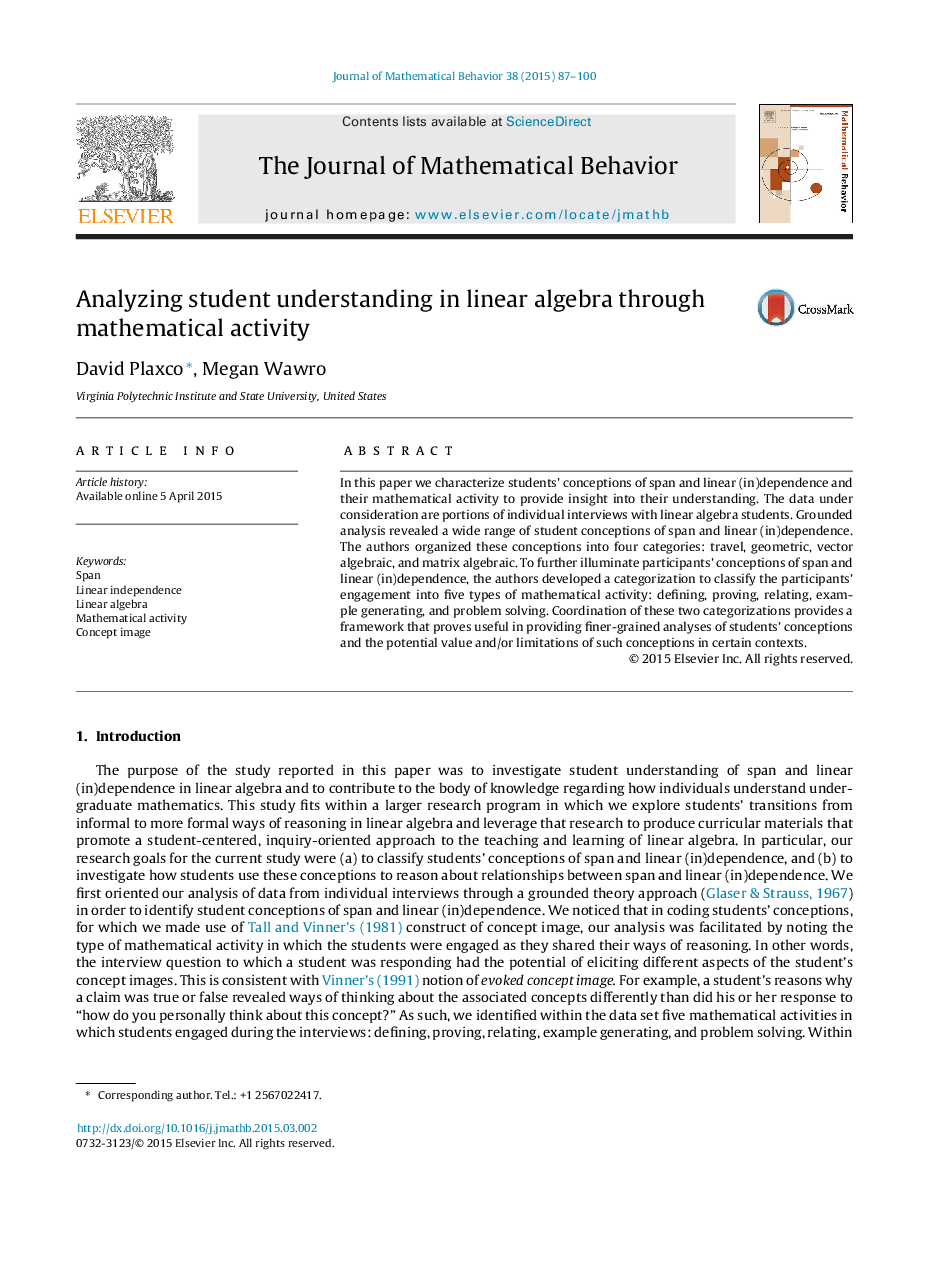| کد مقاله | کد نشریه | سال انتشار | مقاله انگلیسی | نسخه تمام متن |
|---|---|---|---|---|
| 360659 | 1436013 | 2015 | 14 صفحه PDF | دانلود رایگان |
• We categorize student conceptions of linear independence/linear dependence and span.
• We categorize the types of activity in which participants engaged during interviews.
• We draw on these categorizations to develop a broader, dual framework for analysis.
In this paper we characterize students’ conceptions of span and linear (in)dependence and their mathematical activity to provide insight into their understanding. The data under consideration are portions of individual interviews with linear algebra students. Grounded analysis revealed a wide range of student conceptions of span and linear (in)dependence. The authors organized these conceptions into four categories: travel, geometric, vector algebraic, and matrix algebraic. To further illuminate participants’ conceptions of span and linear (in)dependence, the authors developed a categorization to classify the participants’ engagement into five types of mathematical activity: defining, proving, relating, example generating, and problem solving. Coordination of these two categorizations provides a framework that proves useful in providing finer-grained analyses of students’ conceptions and the potential value and/or limitations of such conceptions in certain contexts.
Journal: The Journal of Mathematical Behavior - Volume 38, June 2015, Pages 87–100
